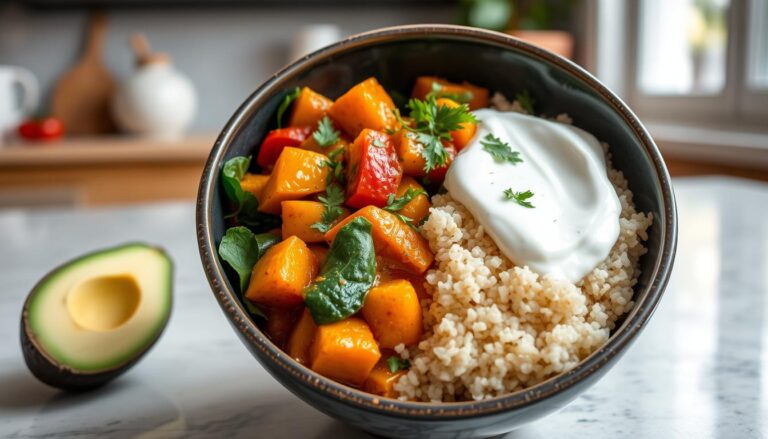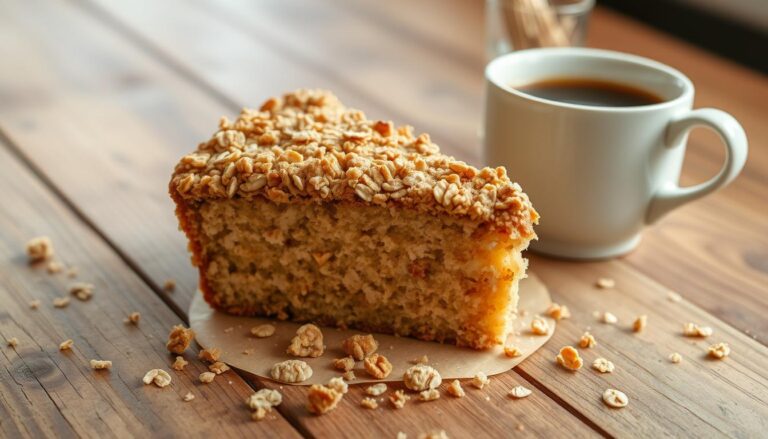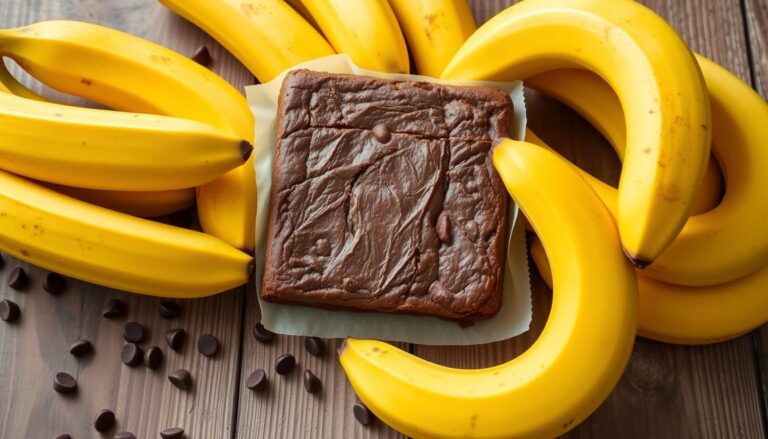Easy & Healthy Dehydrator Recipes to Try at Home
As I stood in my kitchen, the dehydrator’s gentle hum filled the air. It was turning fresh produce into nutritious snacks. Dehydrating has become a favorite in our home, letting us enjoy nature’s bounty all year.
The sweet smell of apple cinnamon fruit leather and the crunch of homemade banana chips bring us joy. Making these treats is a special experience.
In this article, I’ll share easy and healthy dehydrator recipes for you to try at home. Learn how to make your own dried fruits, vegetable chips, and protein-packed jerky. You’ll keep the nutrients and flavors that make these snacks so good.
Key Takeaways
- Dehydrating is a cost-effective way to transform fresh produce into nutritious snacks
- Excalibur and BioChef are reliable dehydrator brands for home use
- Recipes include apple cinnamon fruit leather, banana chips, watermelon jerky, and more
- Dehydrated foods retain their nutritional value and offer a healthier alternative to store-bought options
- Personalized serving sizes can be tailored to suit the needs of children and adults
Understanding Food Dehydration Basics
Dehydrating food is a simple way to keep it fresh and full of nutrients. It removes moisture, stopping bacteria, mold, and yeast from growing. This method has been used for about 12,000 years, especially in warm, dry places.
How Dehydration Preserves Food
The dehydration process removes water from food, leaving a concentrated, long-lasting product. This makes it hard for harmful microorganisms to grow. It works well on many foods, like fruits, veggies, meats, herbs, and even snacks.
Temperature and Time Guidelines
Keeping the right temperature is key for dehydrating food. The best temperature depends on the food type:
- Fruits: 135-140°F (57-60°C)
- Vegetables: 125-135°F (52-57°C)
- Meats: 145-160°F (63-71°C)
Drying times vary, from 20-40 minutes for fruits and herbs to hours for thicker items. It’s important to watch and adjust thedehydrator temperature settingsfor the best results.
Essential Equipment for Dehydrating
To dehydrate food at home well, you need good dehydrator equipment. Look for one with adjustable temperature and good airflow. Important features include:
- A dehydrator with many trays for efficient use
- Non-stick sheets or mesh liners to prevent sticking
- Enough air circulation for even drying
While ovens can dehydrate food, an electric dehydrator is better. It has better temperature control and uses less energy, making it the top choice for home cooks.
Benefits of Making Your Own Dehydrated Foods
Making your own dehydrated meals is a big plus for backpackers and outdoor fans. These eco-friendly snacks save money and let you pick your flavors and nutrients. It’s a win-win!
One big perk is saving money. Store-bought dehydrated meals cost $10 to $15 per serving. But, making your own costs just over $2.00. That’s a huge savings!
Plus, you can make your meals just how you like them. You can adjust the carbs, protein, or fat to fit your diet. It’s a great way to enjoy tasty, healthy meals.
Dehydrating your food also helps the planet. It cuts down on packaging waste, making it better for the environment. Plus, using a dehydrator uses less energy than heating a whole oven.
In short, making your own dehydrated meals is smart. It saves money, lets you customize, and is good for the planet. With a bit of effort and a good dehydrator, you’ll have delicious, healthy meals for your next adventure.
Best Fruits for Dehydrating at Home
Dehydrating your own dehydrated fruit recipes at home is a great way to keep fruits fresh. You can make tasty fruit chips or enjoy dried berries for a snack. Many fruits work well for dehydration.
Apple and Banana Chips
Apples and bananas are easy to dehydrate. Dehydrating an apple cuts its weight from eight ounces to one ounce. This makes it a great snack to take on the go.
Slice apples and bananas thinly. This helps them dry evenly at 135°F (57°C).
Dried Berries and Citrus
Strawberries, raspberries, and blueberries dry well, becoming chewy and flavorful. Oranges and grapefruits also dry well, keeping their tangy taste. But, be careful with delicate berries as they can dry unevenly.
Tropical Fruit Options
Try dehydrating mangoes, pineapples, or papayas for a tropical snack. These fruits become sweet and leathery, perfect for trail mixes. Dehydrating them takes longer, but it’s worth it.
Whether you’re new or experienced with dehydrating, there’s a lot to explore. Try different fruits to make delicious fruit chips and dried berries. Enjoy them all year round.
Vegetable Dehydrator Recipes
Dehydrating vegetables is a great way to keep their nutrients and make tasty snacks. You can make everything from kale chips to dried mushrooms. These recipes will make you choose dehydrated vegetables over unhealthy chips.
Crispy Green Bean Chips
Green beans become a tasty veggie chips alternative when dehydrated. Just wash, trim, and slice them thinly. Add your favorite seasonings like garlic powder or paprika, then dehydrate until crispy.
Zucchini Chips
Zucchini dries well and makes a great snack. Slice it thinly, toss with oil and spices, and dehydrate until crispy. These chips are perfect for salads or soups.
Dried Mushrooms
Dried mushrooms are a flavor boost for many dishes. Slice or tear them into thin pieces and dehydrate until dry. These dried mushrooms can be soaked in hot water or broth for stews and risottos.
| Vegetable | Preparation | Dehydration Time | Suggested Uses |
|---|---|---|---|
| Kale | Wash, remove stems, tear into bite-sized pieces | 6-8 hours | Salads, snacks, soups |
| Carrots | Peel, slice into thin rounds | 8-12 hours | Snacks, stews, casseroles |
| Beets | Peel, slice into thin rounds or wedges | 8-12 hours | Salads, snacks, roasted dishes |
To get the best results, slice your vegetables evenly and dry them well. With practice, you’ll make delicious dehydrated vegetables quickly.
Creating Healthy Fruit Leather and Rolls
Homemade fruit leather and rolls are a tasty and healthy snack you can make at home. They are perfect for when you need a sweet treat. They also give you natural sugars and fiber from the fruit. Let’s look at how to make your own homemade fruit leather and fruit roll-ups with these easy recipes and tips.
Apple Cinnamon Leather Recipe
Apple cinnamon is a classic and loved flavor mix. To make this tasty dehydrator fruit snack, blend unsweetened applesauce with a bit of ground cinnamon. Spread it on dehydrator trays and dry at 135°F for 8-12 hours. Wait until it’s as chewy as you like.
Mixed Berry Combinations
Try mixing different berries like strawberries, blueberries, raspberries, and blackberries for a tangy twist. Blend them together and spread on your dehydrator trays. The berries’ natural sweetness makes a flavorful fruit leather.
Storage Tips for Fruit Leather
After your fruit rolls or leather are ready, store them right to keep them fresh. Roll the leather in parchment paper and put it in an airtight container. This keeps the fruit leather from drying out or getting soggy. Stored well, your dehydrator fruit snacks can last up to 2 weeks.
With these easy methods and tasty recipes, you can enjoy homemade fruit leather and fruit roll-ups anytime. Try different fruit mixes, add spices or nuts, and enjoy the natural sweetness of these versatile treats.
Homemade Jerky and Protein Snacks
Make your snacks better with homemade jerky! You can choose from classic beef or healthier salmon jerky. Making your own jerky is fun and tasty. Explore dehydrator recipes to make delicious, protein-rich snacks.
Beef Jerky Perfection
Begin with a tasty beef jerky recipe. Use lean beef, a tasty sauce, and the right dehydrating temperature. Slice the meat thinly for a soft texture. Try different marinades and spices to create your unique flavor.
Salmon Jerky: A Healthy Alternative
Try making salmon jerky for a healthy snack. Salmon is full of omega-3s, great for your heart. Dehydrate salmon with your favorite seasonings for a tasty, healthy snack.
Preserving the Goodness
Keep your homemade jerky fresh by storing it right. Enjoy your dehydrator jerky within three months for the best taste. Store it in an airtight container or vacuum sealer to keep it fresh longer.
| Jerky Type | Shelf Life at Room Temperature | Shelf Life in Airtight Container | Shelf Life in Vacuum Sealed |
|---|---|---|---|
| Beef Jerky | 1 week | 1 month | Up to 1 year |
| Salmon Jerky | 1-2 weeks | 2-3 months | 6 months to 1 year |
Enjoy the taste and texture of homemade jerky. Choose from beef jerky or salmon jerky. With the right methods, you can enjoy these snacks for months.

“The beef jerky recipe is a game-changer! I doubled the batch and it’s gone in no time. The spicy habanero version is my new favorite.”
Creative Seasoned Vegetable Chips
Make your snacking better with homemade veggie chips. You can make many tasty and healthy chips at home. Try kale, spinach, sweet potatoes, and carrots for a crunchy treat.
Kale and Spinach Chips
Kale and spinach chips are great for a healthy snack. Add salt, garlic powder, or nutritional yeast for extra taste. They turn into crispy, nutritious snacks full of vitamins and minerals.
Root Vegetable Variations
Try sweet potatoes, beets, and parsnips for tasty chips. Use chili powder, Tajin, or rosemary for different tastes. Their natural sweetness goes well with spices, making for a healthy snack.
| Vegetable | Dehydration Time | Nutritional Benefits |
|---|---|---|
| Kale | 6-8 hours | High in vitamins A, C, and K, as well as antioxidants. |
| Spinach | 4-6 hours | Rich in vitamins A, C, and K, iron, and folate. |
| Sweet Potato | 8-12 hours | Excellent source of vitamin A, vitamin C, and fiber. |
| Beet | 6-10 hours | High in antioxidants, folate, and manganese. |
Homemade veggie chips are a healthy snack choice. Try different veggies and spices to find your favorite. Enjoy the crunch and health benefits of these tasty chips.
Meal Prep Using Your Dehydrator
Dehydrators are a game-changer for making lightweight, nutritious meals for camping or backpacking. You can dehydrate meals like chili, stews, and rice dishes. Then, just add boiling water to rehydrate them on the trail.
Choose meals with small ingredients like rice, lentils, and chopped veggies. Stay away from high-fat foods to keep meals fresh longer. Dehydrate pasta at 135°F for 2-4 hours, and veggies at 125°F for up to 8 hours.
Dehydrated meals can last up to 6 months in the fridge or longer in the freezer. This makes dehydrated meals perfect for backpacking food prep and camping meals. Just remember, you’ll need to add more water when rehydrating.
| Food Item | Dehydration Temperature | Dehydration Time |
|---|---|---|
| Pasta | 135°F | 2-4 hours |
| Vegetables | 125°F | Up to 8 hours |
| Hummus | 135°F | About 8 hours |
| Rice | 125°F | About 5 hours |
| Canned Chicken | 145°F | About 8 hours |
| Beef Roast and Mushrooms | 160°F | About 8 hours |
With a Nesco dehydrator that expands to 30 trays, you can make endless dehydrated meals. Start exploring backpacking food prep and camping meals with your dehydrator today.

Storage and Preservation Methods
Keeping your dehydrated foods fresh is crucial. Store them in airtight containers or vacuum-sealed bags. This stops moisture from getting in and ruining the food’s taste and texture. Use silica gel packs to soak up any extra moisture, keeping your food safe.
For long-term storage, label each container with what’s inside and when you dried it. This makes it easy to use the oldest items first. Keep your dehydrated foods in a cool, dark spot. Light and heat can cause them to spoil faster. Check your containers often for moisture or other signs of damage.
Learning how to store your dehydrated foods right can make them last longer. Whether you’re saving veggies from your garden or making healthy snacks, these tips will help. You’ll enjoy your dehydrated foods for a longer time.







